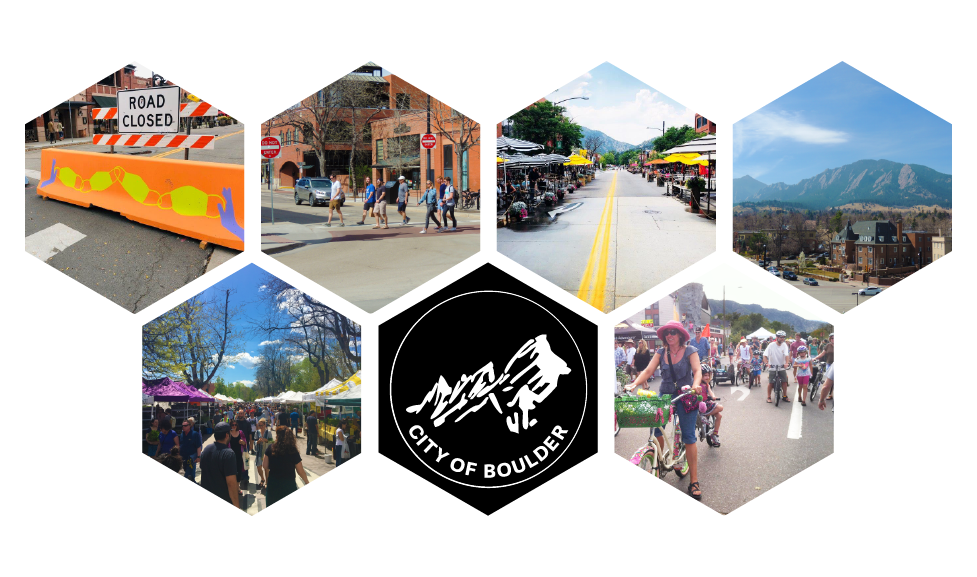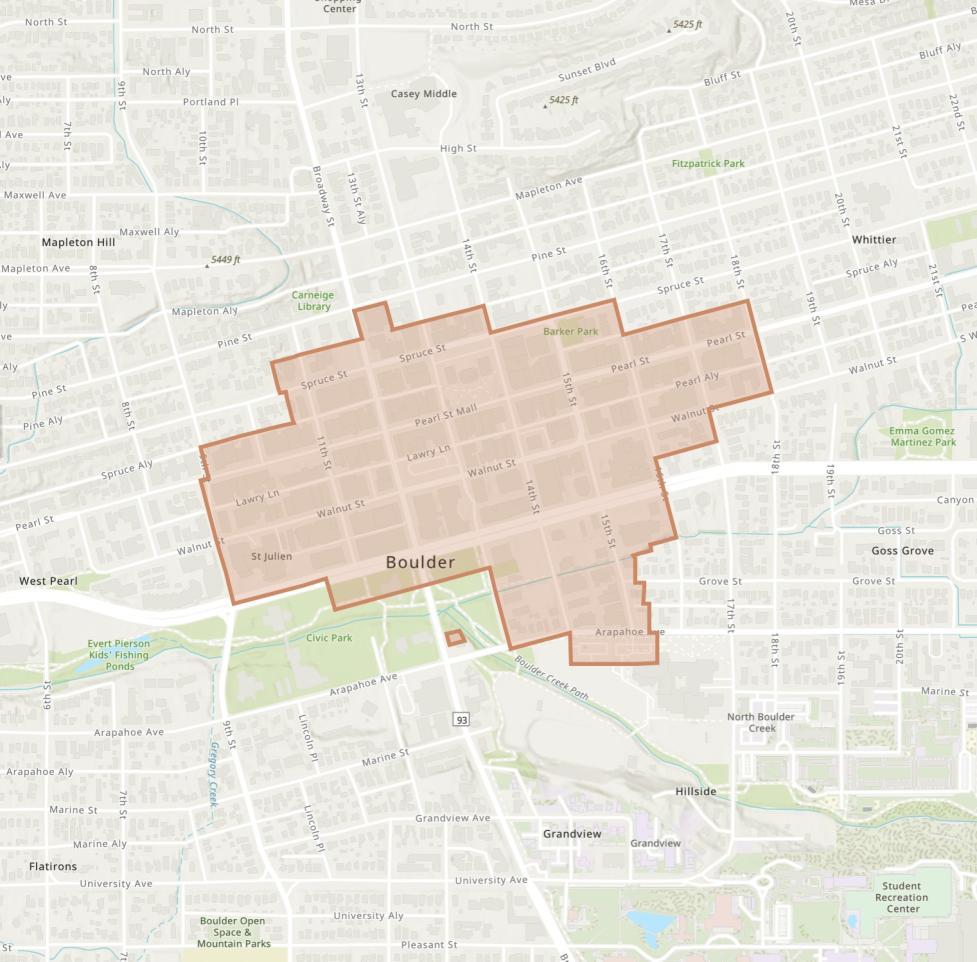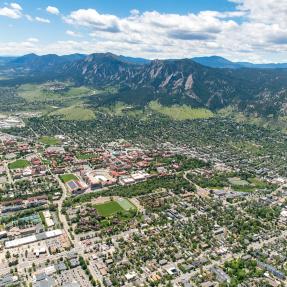Project Overview
Boulder Social Streets (previously called Downtown Streets as Public Space project) is a project using analysis and community feedback to reimagine downtown streets as welcoming spaces to gather, attend events and connect.
The project will lead to temporary repurposing of downtown streets with programming, cultural events, public art and more, and develop long-term recommendations for changes to streets as public spaces.






